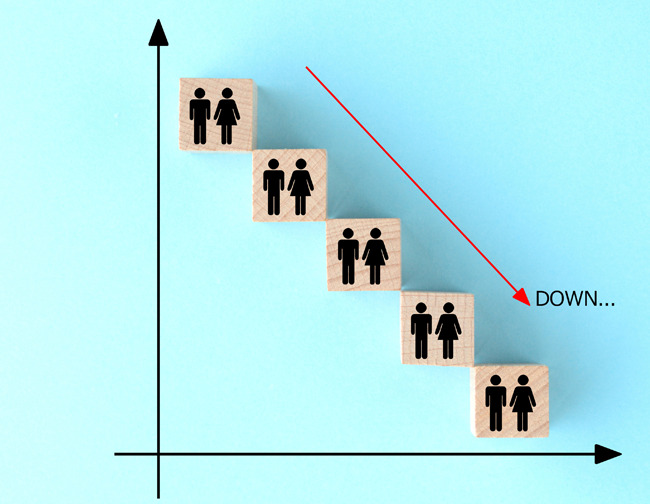
The results of the first half of the national and public universities have been announced, and the 2021 entrance examination is nearing the end.For the past few years, the popularity of national and public universities has been stable due to the local orientation of examinees, but this year the competition rate is easing, with the application rate finally dropping below 1992 times in the first half of the year, when the number of applicants is the highest.The background to this is the impact of the declining population, and the number of private university applicants has been declining since last year. The 18-year-old population has continued to decline since 2008, but has remained almost flat since around 2018.It began to decline again in 2018, and was once referred to by university officials as the "2018 issue."It can be said that this year's entrance examination came three years behind the XNUMX problem.
The application rate for the first half of the national and public universities is less than XNUMX times
The 2021 entrance exam was one of the toughest entrance exams to date for students, including the various confusions associated with the reform of high school connections and the effects of the new corona infection.Since the entrance examination is conducted while taking measures against infectious diseases for the university, the operational load is not comparable to the past.Many universities have suffered financial damage in addition to the work burden, as they have spent a lot of money on online lessons and the introduction of ventilation system equipment.
Information such as the application status of national, public and private universities is published on various sites, but Kawaijuku's university entrance examination information site Kei-Net regularly updates the overall total in addition to the application status of individual universities. It has been.In addition, the Yoyogi Seminar also publishes the overall summary of application status on its site and updates it regularly.From the information on these sites, in addition to the number of applicants for private universities declining this year, the total number of applicants for national and public universities has decreased by more than 1 to 4 (42). The exact number is 5, the same below), which is the smallest number ever.
Looking at the summary table by Kawaijuku, the application rate (the number of applicants divided by the number of applicants) is less than 3.0 times from 2.9 times to 2.9 times in the entire first term schedule of national and public universities.Looking only at national universities, the application rate was already less than XNUMX times last year, which was XNUMX times in the first half of the year.It is not uncommon for national and public universities to divide the number of examinees by the number of successful applicants, and the actual magnification is XNUMX times or less, but at the stage of application magnification, it is significant that it is in the XNUMXx range of XNUMX times or less. I have.
In the case of a private university, if the application rate for general selection is in the XNUMXx range, the actual magnification may be less than XNUMXx.In general selection, we often announce the number of successful applicants, which is more than double the number of applicants, considering the number of applicants from other universities who do not complete the admission procedure even if they pass.In other words, if the actual ratio is less than XNUMX in the general selection, it means that there are few rejected applicants and the competition principle is not working.
It's not really a selection.Of course, in the case of national and public universities, examinees self-assess and apply after seeing the expected borderline of each company, so the application destinations are dispersed and the overall application rate is leveled.Therefore, it cannot be seen in the same line as the entrance examination of a private university, but it can be said that it is a number that should be watched.
Kawaijuku University Entrance Examination Information Site Kei-Net
https://www.keinet.ne.jp/exam/future/
Entrance Examination / Education Topics
https://www.keinet.ne.jp/exam/topic/
